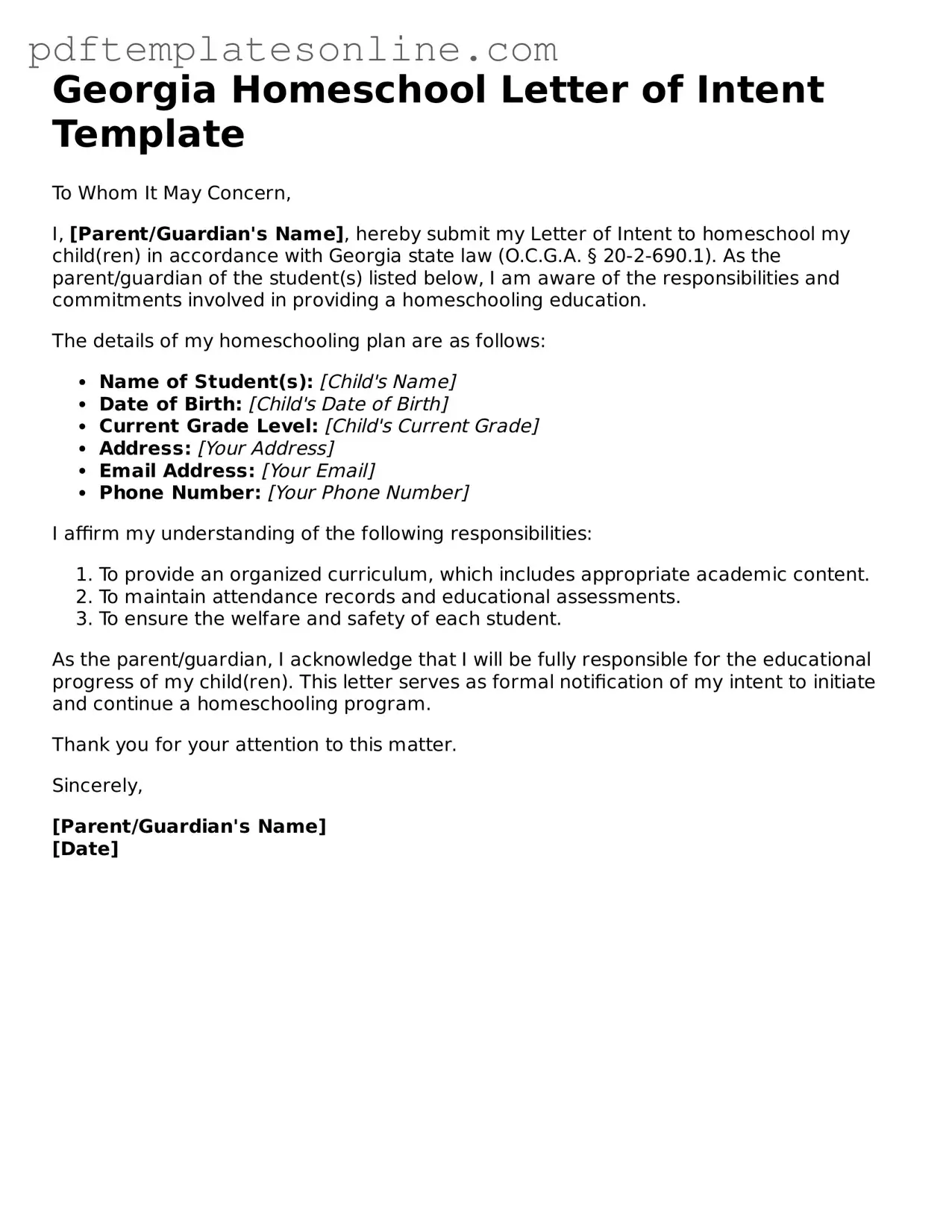Filling out the Georgia Homeschool Letter of Intent form is an important step for families choosing to educate their children at home. However, mistakes can occur, leading to potential issues with compliance. Understanding common errors can help ensure a smoother process.
One frequent mistake is incomplete information. It’s essential to provide all required details, including the names and ages of the children being homeschooled. Omitting any information can delay the approval process or lead to misunderstandings.
Another common error is incorrect dates. Families must ensure they accurately indicate the start date of their homeschooling. If the date is unclear or incorrect, it could raise questions about the validity of the intent.
Some individuals fail to sign the form. This might seem trivial, but without a signature, the document is not considered valid. Always double-check that all required signatures are present before submission.
Another mistake involves not keeping a copy of the submitted form. Families should always retain a copy for their records. This can be invaluable for future reference or in case any issues arise later.
Many people also overlook the deadline for submission. The form must be submitted within a specific timeframe to comply with state regulations. Missing this deadline can lead to complications or the need to reapply.
Some applicants mistakenly believe that additional documentation is not necessary. While the form itself is crucial, being prepared to provide additional information if requested can prevent delays and confusion.
Another issue arises when families do not check for updates to the form or regulations. Laws and requirements can change, so it’s vital to ensure that the version being used is the most current.
Occasionally, individuals submit the form without reviewing it thoroughly. Errors in spelling or incorrect information can lead to questions about the legitimacy of the application. Taking the time to review can prevent these issues.
Some families also fail to communicate with local authorities. Understanding local expectations can clarify any uncertainties. Engaging with local homeschool organizations or authorities can provide valuable insights.
Lastly, individuals sometimes forget to ask for help if they are unsure about any part of the process. Resources are available, and seeking assistance can lead to a more successful and compliant homeschooling experience.
